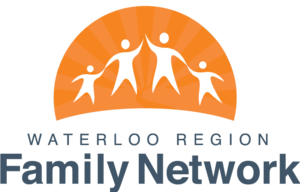
We collect basic website visitor information on this website and store it in cookies. We also utilize Google Analytics to track page view information to assist us in improving our website.
From time to time, the Waterloo Region Family Network (WRFN) is asked to distribute information on behalf of third parties. WRFN provides general information to self-advocates and families of children with special needs. The information provided on this website is not a recommendation, referral or endorsement of any resource, therapeutic method, or service provider. WRFN is not responsible for any information or services provided by third parties. You are urged to use independent judgment when considering any resource.
By Cristina Stanger, Self-Advocacy Liaison WRFN
*This article was originally published in the Family Pulse Newsletter November 2019*
Effective communication and emotional expression can be difficult, even at the best of times. The upcoming holiday season adds extra stress and strain to relationships; it is an overwhelming time for most, making communication both more important and harder to do.
No person exists in a vacuum. We are all impacted by various elements throughout our day: a good night’s sleep, a pleasant visit with a friend, getting stuck in traffic, forgetting to take medication, a nice walk, a substitute personal support worker, a disagreement with a coworker, a favourite meal, an unexpected change in routine, etc. All of these types of things impact how we are feeling, and in turn, affect how much energy we will have to invest in communication with other people.
Communication challenges related to various exceptionalities can further complicate things. Perhaps you (or your loved one) are unable to communicate verbally. Perhaps you struggle to identify and express emotions. Perhaps your ability to read non-verbal cues is not as strong as you would like, leaving you with missing information. When I work with different individuals and families, finding more effective ways to communicate comes up often in discussion, particularly when trying to understand each other’s feelings. Here are some creative ideas you and your family may wish to explore:
Be general if you cannot be specific
Be patient and gently check-in with each other, if possible
Be creative and utilize a different medium to express yourself
Be strategic and set the stage for success
Please bare in mind, this is not an exhaustive list. And as always, you know yourself and your family best, so these ideas are merely food for thought. I am not a perfect communicator, if anything, writing this article has reminded me about areas I would like to work on in my own life. I hope they’ve sparked something for you to consider as well.
------
If you or your family members would like to discuss this, or any other topic, please reach out to Cristina through the Ask A Self-Advocate program (AASA). As with all WRFN programming, the AASA program is provided at no charge.